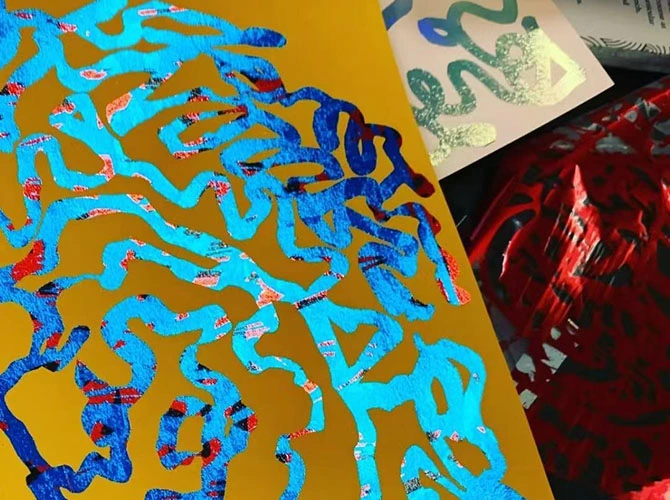What is the difference between hot foil and digital foil?
2025-03-31
Hot foil and digital foil are two popular methods used for adding metallic or glossy foil effects to printed materials. While both achieve a luxurious and eye-catching finish, they differ in their application process and ideal use cases. Here’s how they compare:

1. Application Process
- Hot Foil:
- Uses heat, pressure, and a metal die to transfer foil onto the material.
- The die is custom-made for the design, making it ideal for bulk orders.
- Suitable for a wide range of materials, including paper, leather, and plastic.
- Digital Foil:
- No dies or plates are required. Instead, foil is applied using a digital printing process.
- Often uses a toner-based system or UV adhesive to adhere the foil.
- Best suited for short runs and personalized or variable data printing.
2. Cost and Production Time
- Hot Foil:
- Higher setup costs due to custom die creation.
- More cost-effective for large-scale production.
- Longer production time compared to digital foil.
- Digital Foil:
- Lower upfront costs with no die requirement.
- Ideal for small orders and fast turnaround times.
- Allows for on-demand printing with minimal waste.
3. Design Flexibility
- Hot Foil:
- Offers a premium, embossed effect with deep impressions.
- Provides a wider range of metallic foil finishes, including holographic and textured foils.
- Best for simple, bold designs without intricate details.
- Digital Foil:
- Allows for intricate, detailed designs and fine lines.
- Supports variable data printing, making it perfect for personalized items.
- Limited in foil color options compared to hot foil.
4. Environmental Impact
- Hot Foil:
- Generates more waste due to the production of dies.
- However, foil stamping is often recyclable if applied to paper-based materials.
- Digital Foil:
- More eco-friendly due to minimal waste and no die usage.
- Suitable for brands seeking sustainable printing solutions.
Conclusion
- Choose hot foil if you need large quantities of premium, luxurious prints like packaging, book covers, or invitations.
- Opt for digital foil for small-batch, personalized projects like event cards, business cards, or promotional materials with quick turnaround needs.
Both methods deliver a stunning foil finish, so the choice ultimately depends on your budget, timeline, and design requirements.


